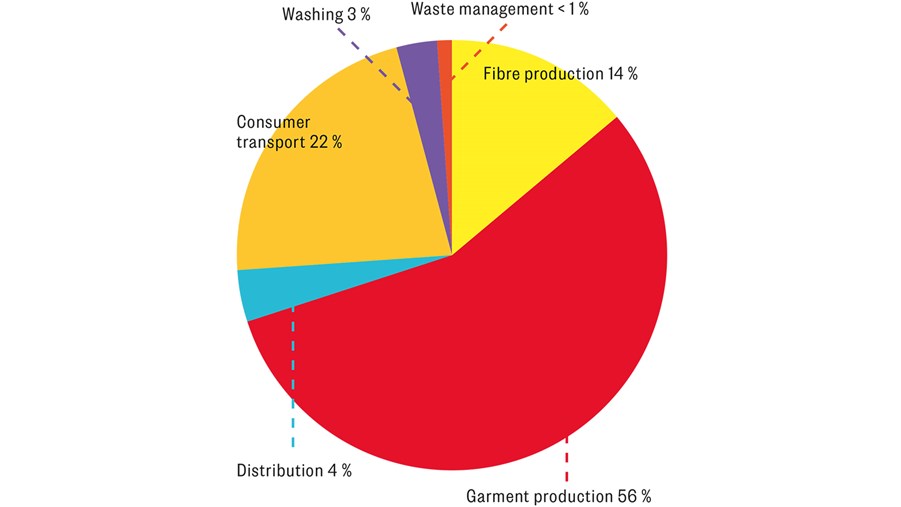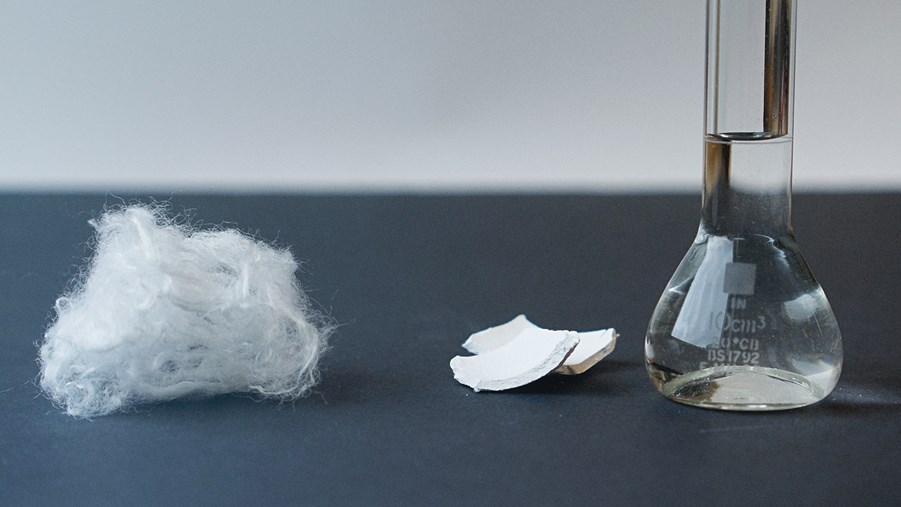
Research by Mistra Future Fashion that shows which phase of the garment life cycle has the greatest adverse impact on the climate. Production has the biggest impact; along with textile fibre production it represents 70%. In second place comes the user phase. Consumer transport accounts for 22% of the climate impact in this phase.
Which phase of the garment's life cycle actually has the most adverse impact on the climate? The study "Environmental assessment of Swedish fashion consumption (2015)" by Mistra Future Fashion has examined the environmental impact of the annual consumption of textiles in Sweden. The study shows that the production of a garment is the dominant phase, accounting for 56 per cent of the impact. Combined with the manufacturing of the textile fibres, production accounts for 70 per cent of the impact on the climate. In second place comes the user phase.
"A large portion of the total environmental impact from clothes is actually attributable to the consumer's car journey to the store," says Cecilia Tall, Secretary General at Teko, the Swedish trade and employers' association for companies working in the textile and fashion industry. "It represents almost a quarter of the impact and is significantly larger than the maritime shipping from Asia, where many clothes are manufactured."
This means that on-line shopping has the potential to contribute greatly to a more sustainable industry. According to Euromonitor International, the market analysis company, 17 per cent of the global purchasing of clothes and shoes, based on value, takes place on-line, and this is increasing. The Swedish Forest Industries Federation's member companies are also seeing an increase in the demand for packaging materials suitable for on-line shopping.
Textile and fashion companies can also do a great deal to help. Substantial research efforts are currently underway to develop new ways to design, create new business models, develop more sustainable materials and increase the efficiency of recycling used textiles.


